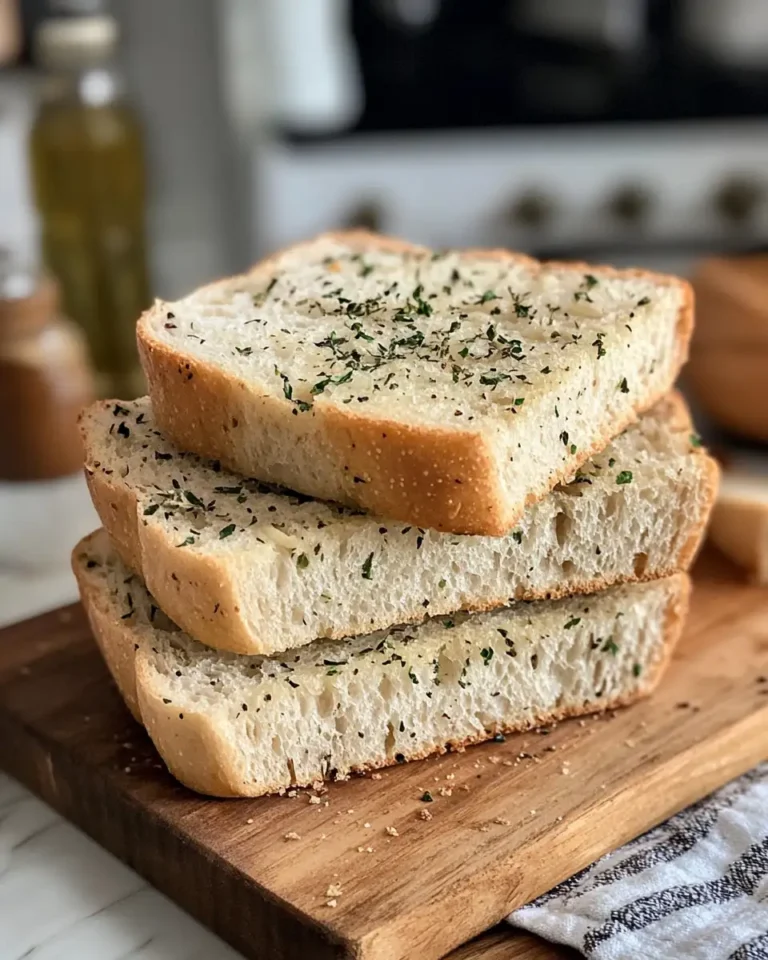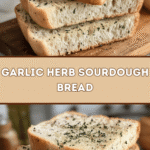Ingredients
Choosing the right ingredients is the foundation of any great bread, and sourdough is no exception. I always recommend using high-quality flour—preferably unbleached bread flour or a blend with whole wheat—to get that perfect chew and flavour. Fresh herbs make all the difference here; if you can source your garlic and herbs locally or from your garden, even better. These simple, honest ingredients come together to create something truly magical.
- 500g (about 4 cups) bread flour
- 350g (1 ½ cups) water, room temperature
- 100g active sourdough starter (fed and bubbly)
- 10g (2 teaspoons) sea salt
- 4 cloves garlic, finely minced
- 2 tablespoons fresh rosemary, chopped
- 1 tablespoon fresh thyme leaves
- 2 tablespoons olive oil, plus extra for brushing
Substitutions: If you don’t have fresh herbs, dried rosemary and thyme can work, but reduce the quantity to 1 teaspoon each to avoid overpowering the bread. You can also swap olive oil for melted butter for a richer flavour.
Instructions
- In a large mixing bowl, combine the bread flour and water. Mix just until no dry flour remains. Cover the bowl with a damp towel and let it rest for 30 minutes. This process, called autolyse, helps develop gluten and improves texture.
- Add the sourdough starter and sea salt to the dough. Mix well until fully incorporated. This dough will be sticky, but resist adding extra flour.
- Gently fold in the minced garlic, fresh rosemary, thyme, and olive oil. Make sure the herbs and garlic are evenly distributed without overworking the dough.
- Begin the bulk fermentation by covering the bowl with a damp towel or plastic wrap. Every 30 minutes for the first two hours, perform a series of stretch and folds: reach under the dough, stretch it upwards, and fold it over itself. This strengthens the dough’s structure.
- After 4-5 hours of fermentation at room temperature, the dough should be puffy with bubbles visible on the surface. Turn it out onto a lightly floured surface and shape it into a tight round loaf.
- Place the shaped dough into a floured banneton (or a bowl lined with a clean kitchen towel) and cover. Refrigerate overnight or for up to 12 hours. This slow proof enhances flavour and makes the bread easier to score.
- Preheat your oven to 450°F (230°C) with a Dutch oven or heavy lidded pot inside for at least 30 minutes. Carefully transfer the dough onto parchment paper, score the top with a sharp blade, and place it inside the preheated pot.
- Bake covered for 20 minutes, then remove the lid and bake for another 20-25 minutes until the crust is deeply golden and crisp.
- Remove the bread from the oven and let it cool completely on a wire rack before slicing. This cooling step is crucial for the crumb to set properly.
- Prep Time: 15 minutes
- Cook Time: 30 minutes
- Category: Main Dish
- Method: Cooking
- Cuisine: International

